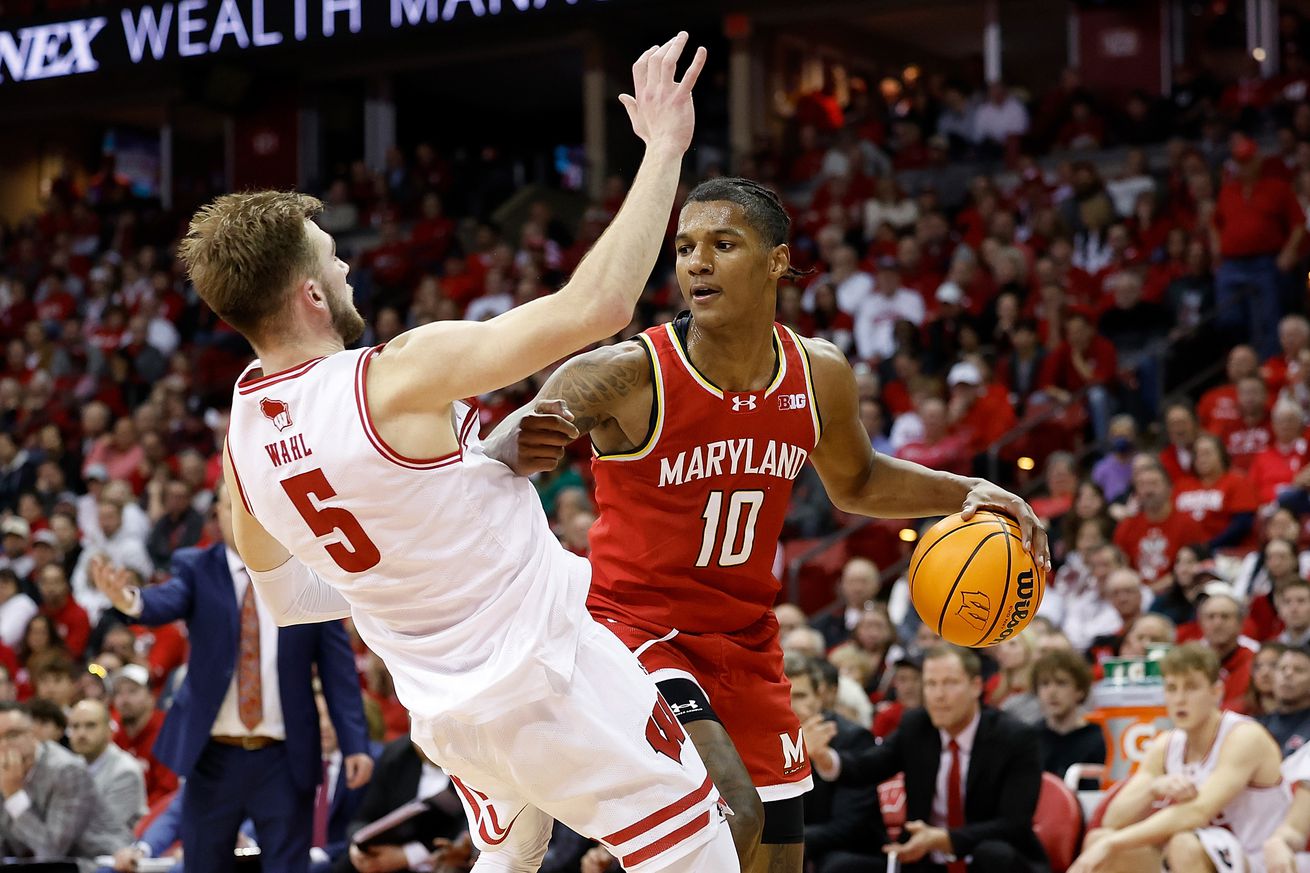
Catch up on the key points from Tuesday’s game.
Maryland men’s basketball couldn’t complete a comeback Tuesday night at Wisconsin, falling to the Badgers, 74-70. The loss dropped the Terps’ overall record to 14-13, with them having lost five of their last six games.
Here are three takeaways from Tuesday’s matchup.
Wisconsin won at the free-throw line
After Tuesday’s game concluded, Maryland head coach Kevin Willard made it clear — in as friendly terms as possible as to not be reprimanded by the Big Ten office — that he believed the officiating wasn’t up to snuff.
“I’m going to call the head of refs tomorrow at some point,” he said after the game.
There were a few calls that stood out as peculiar. First, DeShawn Harris-Smith picked up a charging foul after barely touching Chucky Hepburn, who sold the call with some theatrics.
After a Jamie Kaiser Jr. three made it a two-point game with just two seconds left, Max Klesmit ran into Jahari Long. Maryland thought it had magically found a chance to tie the score, but Long was called for a blocking foul, allowing Klesmit to ice the game at the line.
Regardless of which way their calls leaned, the officials played a major role in the flow of the game. Wisconsin shot eight more free throws than Maryland and made 11 more than the Terps.
As a whole, Maryland has been one of the best teams in the Big Ten at getting to the free-throw line. The Terps are averaging the second-most free-throw attempts per game in the Big Ten (23.9) and have the second-best average free-throw attempt differential in the league, shooting 5.9 more free throws per game than their opponents.
On another note, Jahmir Young continued to be automatic at the charity stripe, bringing his streak of consecutive made free throws to 31. His free-throw shooting percentage of 91.9% leads the Big Ten and would be the best single-season mark in Maryland history. He’s missed just one of his 55 free throws in the month of February.
Maryland was outclassed on the glass
Maryland lost the rebounding battle Tuesday, 33-24. The Badgers also grabbed two more offensive rebounds than the Terps, which turned into second-chance opportunities.
“I thought the biggest difference in the second half is they got three big offensive rebounds in the second half,” Willard said. “Every time we cut it to three, every time we cut it to two, they got a big offensive rebound.”
Forward Julian Reese led Maryland with seven rebounds, but all of them came in the second half. Jordan Geronimo totaled five rebounds, but no other Terp had more than two. Meanwhile, Wisconsin’s rebounding effort was more comprehensive, with four players grabbing at least four boards: guards AJ Storr (eight rebounds) and Chucky Hepburn (four), center Steven Crowl (eight) and forward Tyler Wahl (six).
“Sometimes you just got to get a good break. Two of the offensive rebounds bounced right into Crowl’s hands, and you’ve got to give Tyler Wahl credit because the kid plays really, really hard,” added Willard.
The nail in the coffin?
Maryland’s hopes for an at-large NCAA Tournament bid were on life support coming into Tuesday, and the loss essentially sealed its fate. If the Terps want to qualify for the field, they’re going to need to win the Big Ten Tournament.
Tuesday presented the Terps’ final Quadrant 1 opportunity of the season, and even though the Badgers have struggled greatly down the stretch, a road win would’ve been something to build on. Instead, Maryland is now left with no significant regular-season opportunities to improve its résumé.
“These guys, they’re playing hard, they’re working hard, they have a great attitude,” Willard said. “They’re just as frustrated as I am at the fact that we just can’t string together some [wins].”
Not only are the Terps without any chances to make a statement, but they’re also on a collision course with being a bottom-four seed in the conference tournament. They boarded their plane home with a 6-10 league record, placing them 12th in the conference with four games remaining. A loss in any of their upcoming games against Rutgers, Indiana and Penn State — the three other squads with six Big Ten wins — could be final straw in that regard, too.
The Big Ten isn’t as strong as usual this year, with Purdue and Illinois representing its only ranked teams. But deep conference tournament runs are usually only reserved for elite teams or ones that catch lightning in a bottle. The Terps certainly don’t fit an elite profile, so they’ll likely need to win five games in as many days to go dancing.
